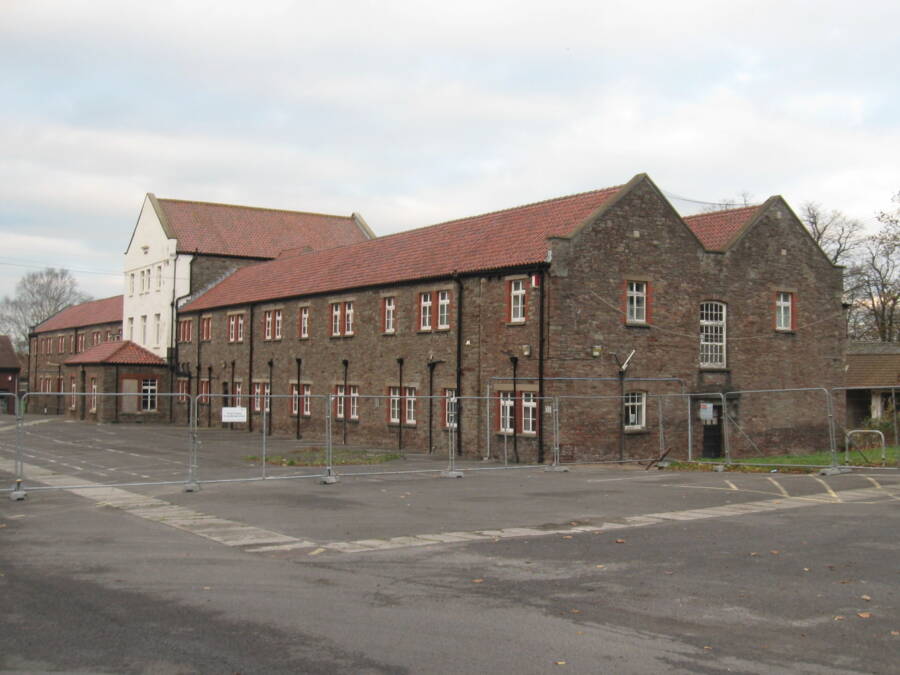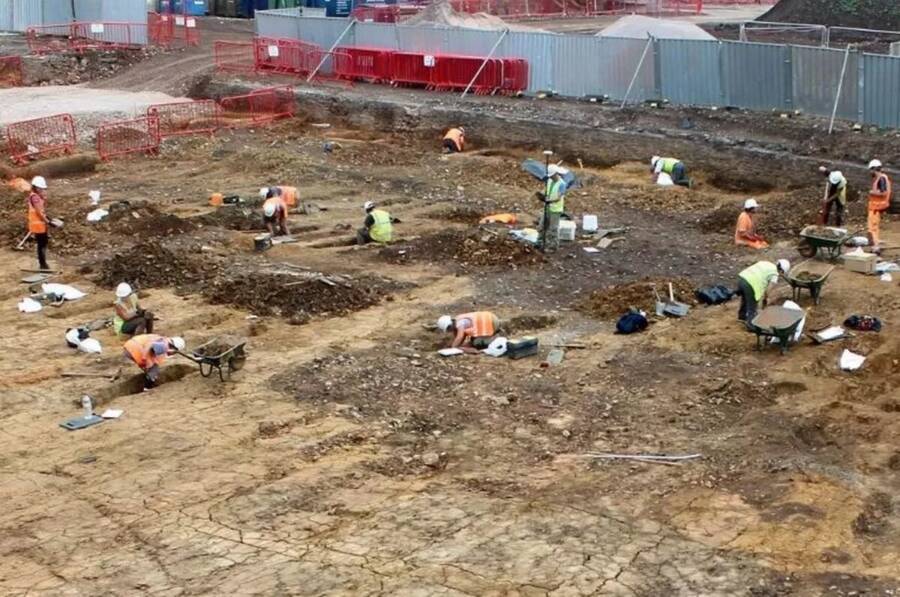Most of the remains date back to the site's time as a workhouse for impoverished citizens of Bristol during the Victorian Era.

Nick/FlickrBlackberry Hill Hospital, the site where archaeologists recovered thousands of human remains, in 2013.
First established in 1779 as a prisoner-of war camp, the site of the former Blackberry Hill Hospital in Bristol, England, has a long and dark history.
Over the centuries, the institution served as a prison, a workhouse for the destitute of the Victorian Era, and a psychiatric facility. In 2018, archaeologists began excavating the site in preparation for a new housing development, and now the team has announced the discovery of more than 4,500 unmarked graves. Most of them date back to the time of the workhouse, when impoverished citizens of Bristol lived in unsanitary and overcrowded conditions.
The project, which is still ongoing, highlights a dark chapter in Bristol’s history and aims to honor the memory of the people who suffered there.
The History Of The Blackberry Hill Hospital Site
In 1779, Stapleton Prison opened in Bristol as “one of the earliest examples of a prisoner-of-war camp in Britain,” according to Cotswold Archaeology, the company leading the excavations. It mainly held captured sailors from Britain’s conflicts with France, Spain, and the United States.

Public DomainAn illustration of Stapleton Prison in 1814.
It fell out of use after the Napoleonic Wars ended in 1815, but in 1832, it was transformed into a hospital during a deadly cholera outbreak. Five years later, it became Stapleton Workhouse, an institution for impoverished citizens similar to the kind Charles Dickens wrote about in Oliver Twist.
Victorian workhouses provided housing and work opportunities for the unemployed and destitute. However, they were notorious for their unsafe conditions. They were dirty and overcrowded, providing the perfect atmosphere for the rapid spread of disease.
When World War I broke out, the site was repurposed into a training center for people with mental disabilities to contribute to the war effort. Then, in the 1940s, it became a psychiatric facility and eventually a geriatric hospital.

Cotswold ArchaeologyAn 1880 map showing the layout of the site.
In recent years, the British government introduced redevelopment plans for the site, aiming to transform it into a community space with apartments, homes, and a shopping center. However, preliminary excavations for the project have unearthed unexpected findings, uncovering evidence of the dark reality of the area’s history.
The Unmarked Graves Found Beneath The Former Victorian Workhouse
In 2018, a team from Cotswold Archaeology began excavations ahead of the redevelopment project at the Blackberry Hill Hospital site. The work continued until 2023, and during that time, archaeologists uncovered thousands upon thousands of unmarked graves.

Cotswold ArchaeologyArchaeologists excavate the Blackberry Hill Hospital site.
“One of the most striking elements of the excavation is the discovery of more than 4,500 graves,” Cotswold Archaeology notes. “These primarily date from the workhouse period, from 1837 to the late 19th century. Some burials may even date back to the site’s earlier function as a prisoner-of-war camp.”
Archaeologists believe the sheer number of remains from the workhouse period demonstrates just how dangerous these establishments were. As Cotswold Archaeology writes on their website:
“These findings provide an intimate window into the lives of ordinary 19th-century Bristolians who found themselves at the workhouse due to poverty and hardship.
The story behind these burials reflects a dark chapter in Bristol’s social history. The workhouse served as a refuge for the city’s poor, offering shelter to those who had fallen on hard times. Many of the individuals buried here had faced extreme poverty and illness before their deaths. Examination of their remains, along with personal items found during excavation, helps archaeologists and historians piece together their life stories — highlighting the societal struggles of the era.”
The archaeology team hopes to publish a full report on the findings in early 2026. “Scientific analysis is ongoing, with researchers examining the remains to understand more about these individuals’ lives, health, and causes of death,” Cotswold Archaeology notes.
So far, many of the unearthed remains have been reinterred at the site. Ultimately, all of the bodies will be respectfully reburied, with a memorial service planned to honor their lives and preserve their memories.
After reading about the 4,500 unmarked graves found in Bristol, go inside nine abandoned hospitals around the world that will make your skin crawl. Then, read about Poveglia Island, a quarantine center and mass grave site for victims of the bubonic plague in Italy.





